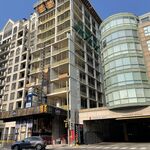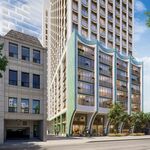Only when you support subway where there is no need for it. I just don't see justifying subway when the long-term peak-hourly load is only 4,000.
I've stated this many times already: I think that number is BS. The assumptions that were used to come up with that model were likely not the same set of assumptions that would be used if subway was implemented instead. In fact, none of the ridership projections for TC hold true for subways, because one of the assumptions at the start of the modelling process is that the technology of choice is LRT. That assumption alone alters the desirability of the line, and how people will transfer on and off of it. 4,000 is the demand for an LRT line, not for the corridor itself. That's a very important distinction to make.
The demand modelling for GO buses to Brampton is different from the demand modelling for GO trains to Brampton. Why? Because more people are attracted by the idea of taking the train than they are taking the bus. The ridership levels right now don't really justify all day GO train service, but if it was implemented, it would be reasonable to assume that the POTENTIAL ridership is there to justify it, should it be implemented. There are plenty of people who would like to take GO in from Brampton, who currently don't because they don't want to take the bus. Implement all day train service, or even a just a higher degree of off-peak train service, and they would be likely to switch over to GO.
The same line of logic holds true for LRT vs subway. Yes, the corridor may only be 4,000pph for LRT, but how many more potential riders will a subway draw, just because it's a subway? If people don't see the LRT as a significant time saving or comfort increasing method of transport over their current means, they won't switch. And a 3 minute time savings on Sheppard East compared to the current bus system, for a lot of people, will not be significant enough to warrant a change in commuting method. In fact, for people who don't live directly along the Sheppard corridor, it may actually result in an increase in travel time, as the bus that currently went directly to Don Mills now dumps passengers off at an LRT stop instead, adding in an extra transfer. Do you really want to stand out in the cold TWICE in the middle of February, just to get to work? Yes, I know the whole "just sit in Tim Horton's and wait" argument, but that doesn't change the fact that it's still an inconvenience for a number of people.
My overall point here: just because the number is low for an LRT ridership forecast, doesn't mean it would be just as low for an HRT ridership forecast. The very nature of the change in technology will not only increase the number of people who alter their current travel routes to utilize the new subway, or the city alters the bus routes to use the new subway, or in the Brampton scenario, creates new riders.




